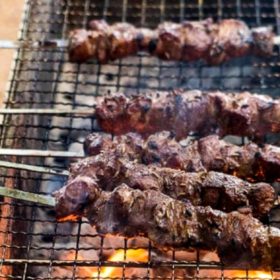When you decide to prepare a dinner based on grilled meat, skewers are a truly delicious and inviting option. Small pieces of meat on a stick make young and old happy.
You can use different types of meat and alternate them with vegetables. The most typical skewer is made up of red meat, white meat, and sausages. Even a fish variant can give great satisfaction.
There is also a particular variety of skewers originating from the Abruzzo Apennines, the arrosticini. Small compared to classic skewers, they are nevertheless delicious. Originally prepared with ciavarra, a young sheep that has not yet given birth, they are made today with mutton, or meat from a sheep older than six months and younger than two years.
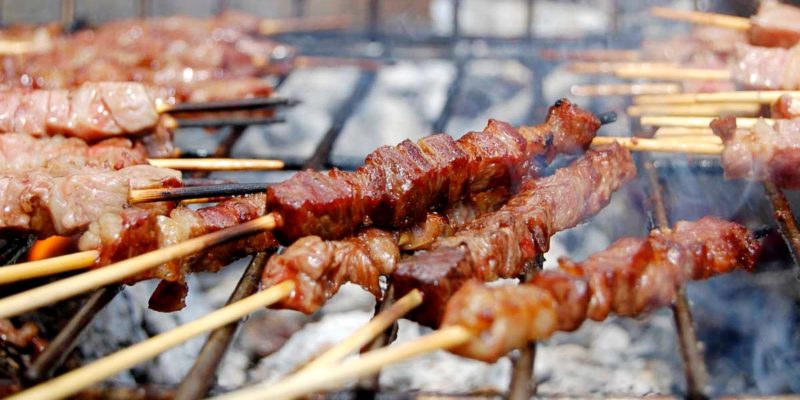
The preparation, according to tradition, consists of cutting the meat into small cubes and putting it on skewers called cippe, or cippitill in dialect.
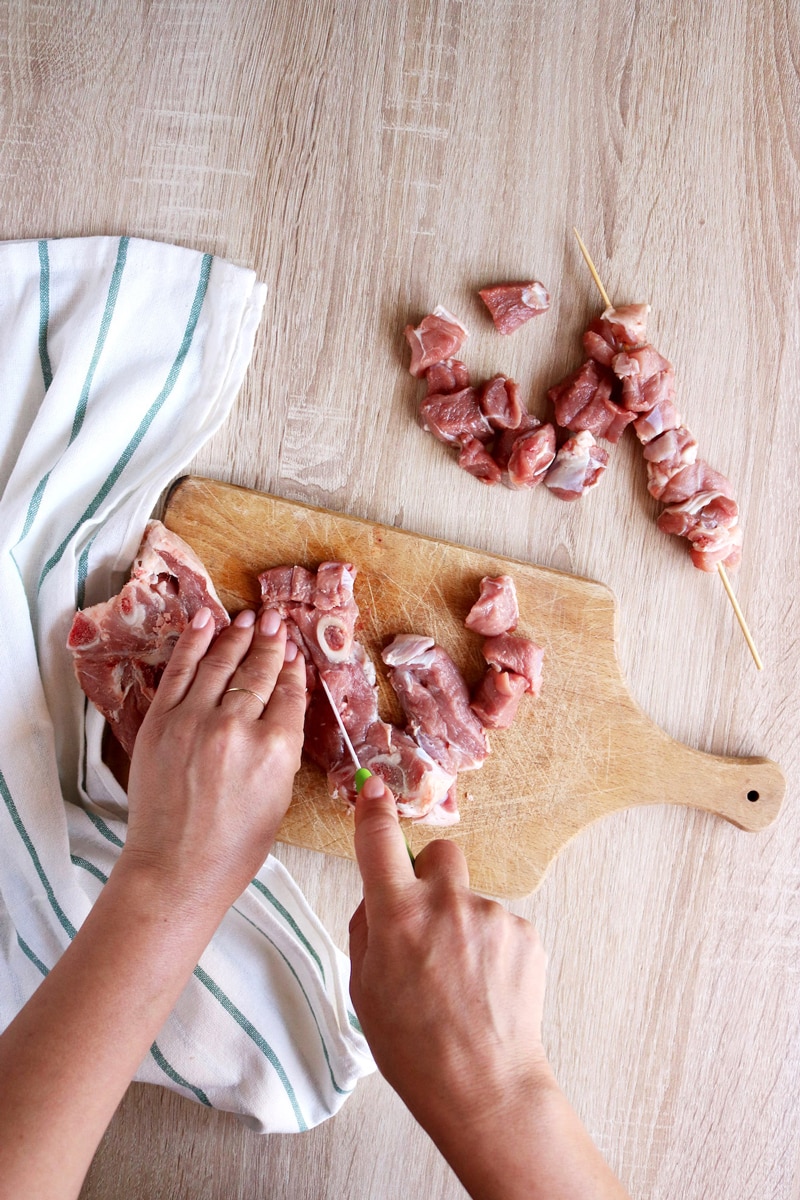
When the meat is cut into pieces, now it’s the time to place the meat cubes in the skewers.
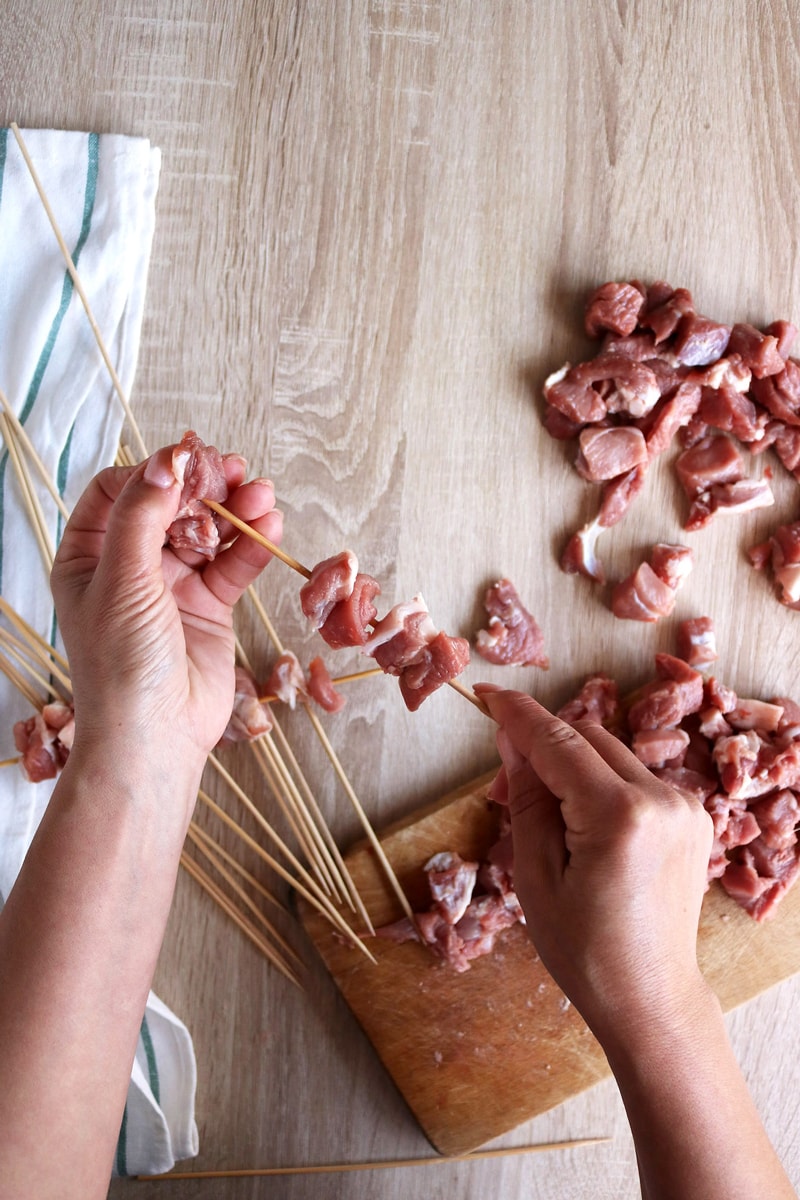
Here’s the final product before cooking it.
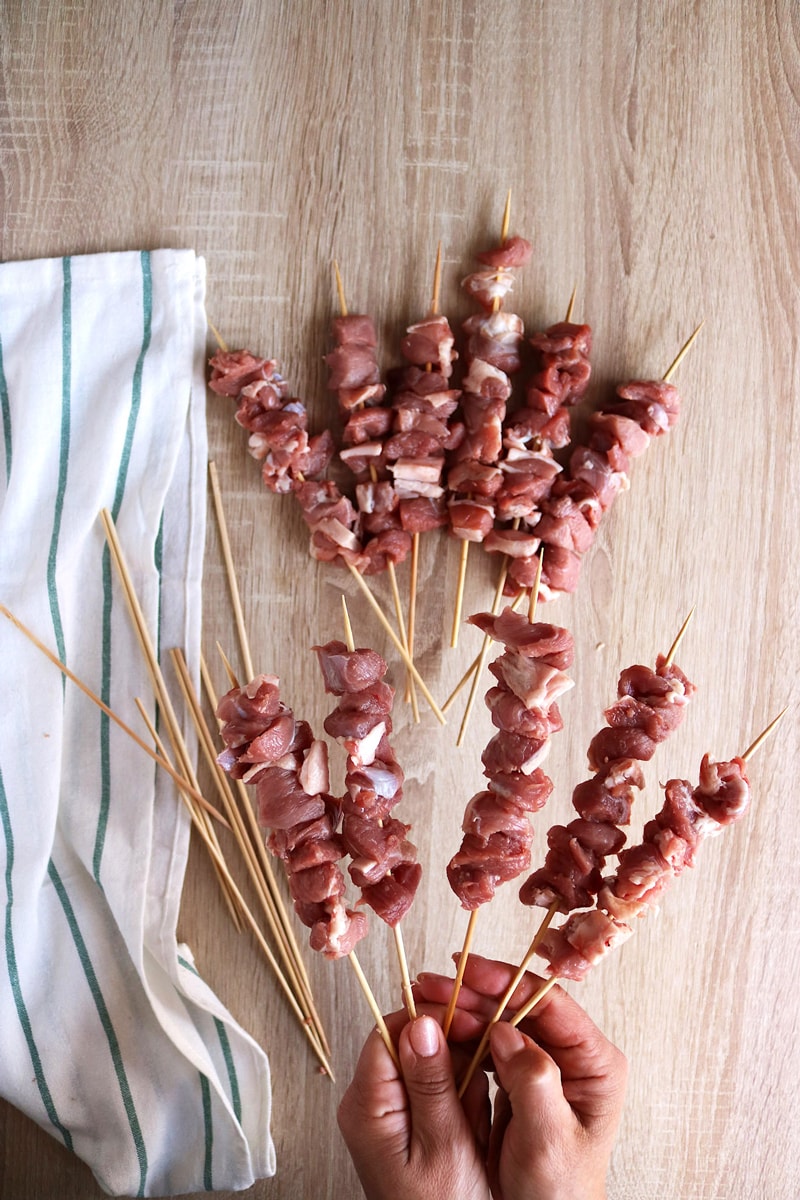
They are then cooked on a particular brazier with an elongated channel shape called fornacella, furnacella, rustillire, or la canala.
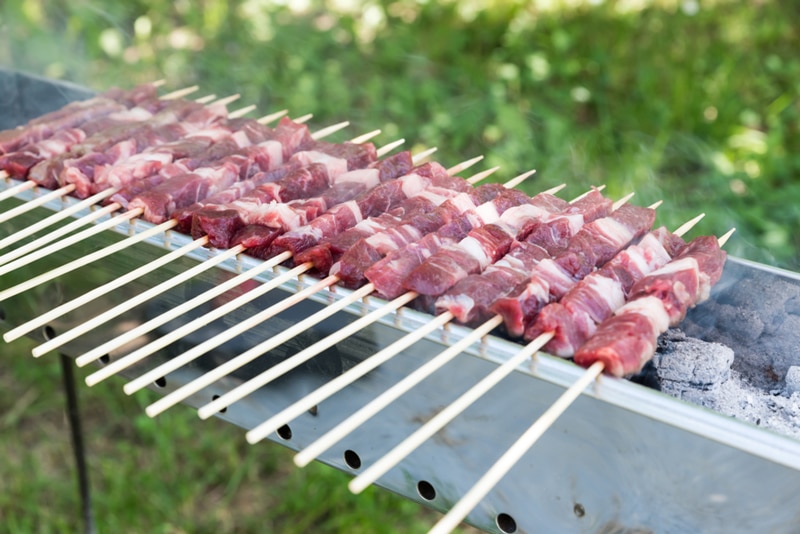
It is important that the meat never comes into direct contact with the fire to prevent it from burning, and for a truly delicious result, it must be constantly turned to obtain even cooking. Cooking on the grill is not reproducible in a kitchen, but you can get a comparable result with a marinade of oil, pepper,
and rosemary and by cooking the arrosticini on a skillet or in the oven.
When cooked, the Arrosticini are seasoned with plenty of salt and pepper and served in bunches wrapped in aluminum foil (a portion usually consists of 20 arrosticini), making this dish one of the region’s street food par excellence.
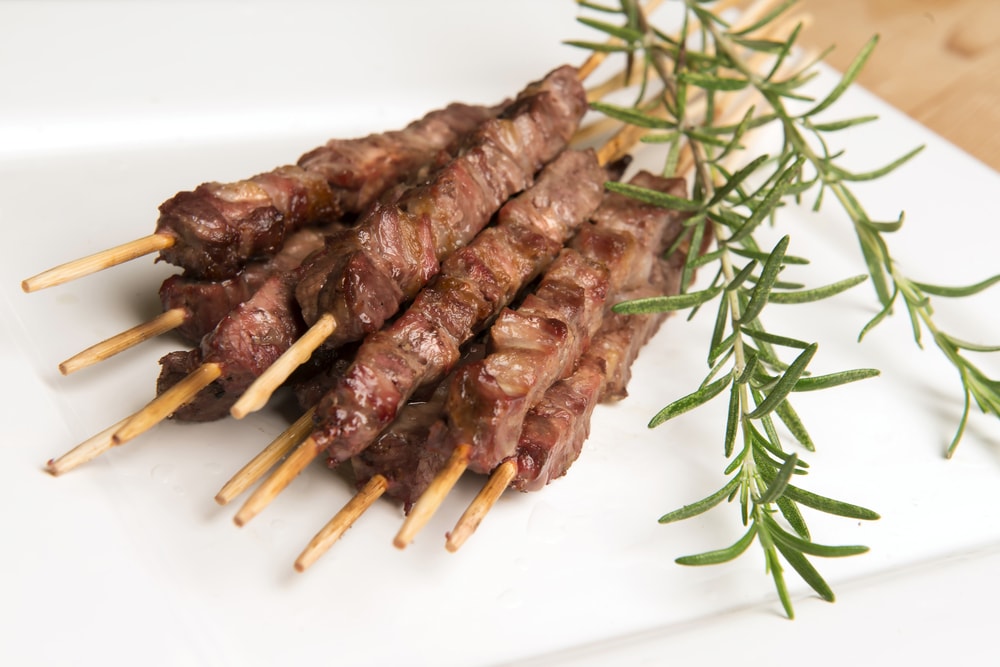
The only legitimate accompaniment is a slice of toasted bread dressed with extra-virgin olive oil.
The origin of Arrosticini probably dates back to the end of the 19th century. It was a typical food of the shepherds who prepared it during transhumance, the movements from the spring and summer pastures to the autumn and winter ones, when they found themselves living in solitude for long periods.
During this time of the year, they ate the non-productive animals, cutting the meat into chunks and using the stems of plants found along the rivers as skewers. They alternated pieces of lean meat with fat so that even the meat of the older animals would be palatable.
